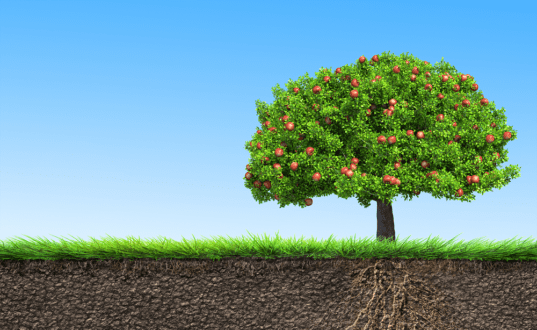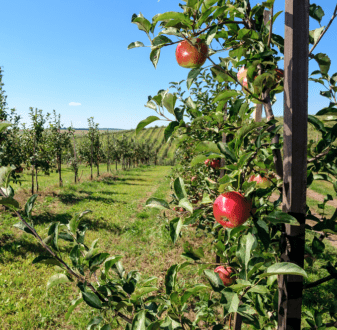

Mar 21, 2023Going deep: Roots determine tree development in orchards
Determining how tree fruit orchardists can manipulate soil health, and use planting and cropping practices to get the optimum outcomes from tree root systems is a key question being examined by researchers.
Astrid Volder, professor of plant sciences in the College of Agricultural & Environmental Sciences at the University of California-Davis, provided an update on the topic in December at the recent Great Lakes Fruit, Vegetable & Farm Market EXPO in Grand Rapids, Michigan.
Volder outlined what roots actually need in perspective to soil health.
“Soil health refers to the ability of soil to perform key ecosystem functions, including sustaining plant growth, minimizing erosion, regulating water flow, and buffering and filtering of potentially toxic materials,” she said.


“Things change over time,” Volder said. “Soil is very dynamic. Oxygen availability is strongly affected by how much water you have in your soils. The temperature within the soil is an impact, too, including seasonal fluctuations in temperature.”
All of those factors determine the material in the microbes and whether nutrients are available or not. Within an orchard, there is huge variability within the soils, although temperature gradients and rainfall are fairly predictable, she said.
The goal is to come up with a dynamic model of what’s happening in the soil, and how that affects the roots.
Perennial root systems consist of large scaffolding in orchards, as well dynamic parts of root systems, which are very fine.
“Roots change a lot in response to changes in your environment,” Volder said. “Fluctuations in moisture and nutrient availability will strongly affect where you will find roots that are going to be growing and where they’re being produced.”
What happens when those factors change the amount of carbon that comes from the shoot? By pruning a plant, what happens to those fine roots in terms of growth dynamics?
“The big thing when you are establishing and thinking about the long-term health of your orchard is you want a nice, long structural root system,” she said. “Sometimes things go really wrong with that, particularly at planting. If you’re not careful and you are placing your tree too flat and you’re pushing those roots together you can get massive problems already in the structure of the root system.”
Sometimes growers stake the trees too tight when planting.
“You should actually allow space for the trees to move to get good structural root development,” she said.
Volder mentioned heading or pruning those trees at planting, which is a practice in California.
“The idea is you usually need to put the shoot and root in balance. In (pruning or heading) you’re going to change the amount of carbon that goes to the root system,” she said.
Data from a comparison of trees that were staked and those that were allowed to move showed that many more roots are formed when trees can move.
“This is one of the reasons you should stake your trees very loosely,” Volder said.
“You need to have very wide roots to actually anchor your tree very well. Deep roots are very important because those are going to be the ones that supply your tree with water.”
Volder said a lot of research on trees relies on soil bores.
“If you take vertical soil bores you’re very likely going to miss those few roots that go very deep. When people ask, how deep do tree roots go, we can’t really answer that question because we just don’t know.”
“When you see some of the issues that we saw when we looked really closely at the root systems, some of it is due to planting. In tissue-cultured trees you can see how roots are pooling over each other.”
Researchers continue to explore root structures, including in nursery production, and the impacts of tree pruning and irrigation.
“So far, we’ve found that if you prune the trees, you’re going to reduce the root to shoot ratio,” she said. “You’re going to have less roots. Whatever you do above ground is going to affect what happens below ground, and also later on with the interactions with the soil. The soil health is actually going to affect how much carbon interacts with the soil microbes.”
Roots also stay “a lot more shallow if you do frequent pruning. You’re going to change the root distribution.”
Volder said researchers also reduced irrigation in this experiment, “but reducing irrigation has much less effect on the root system than actually doing the pruning. We saw more negative effects from pruning on root mass. In California, that could be a major problem because we actually need the roots going very deep to access more water resources.
“Those structural roots have to be in place and have to be spread out and around your orchard and explore a lot of soil in order to provide space for fine, absorptive, first-order roots that do most of the hard lifting for water and nutrient uptake.”
Root age also affects the ability to uptake nutrients, Volder said. Roots that are just born have very high uptake of nitrogen.
“Once you get to 10 days, that is much reduced. You need to have flashes of continuous new root growth in order to get the benefits from them.”
— Gary Pullano, FGN senior correspondent














